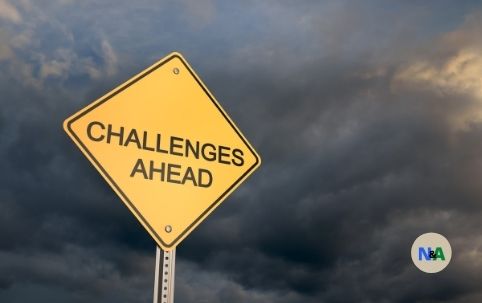I recently asked organizational culture expert Dan Denison about assessing organizational readiness for change (e.g., ERP organizational change readiness) and what factors and company culture metrics he believes signify a company/organization is ready for significant changes. He insisted that there is not one single “best ready status” measure for initiating such a large-scale organizational change. However, there are organizational culture metrics that can be examined when an initiated change is being considered. “Every firm’s context or particular situation is unique, but one big consideration must be how well they understand the primary drivers of change affecting their specific business.” ERP organizational change readiness depends on a culture that advocates for that change.
This is what Nestell & Associates (N&A) knows well enough. In fact, we have a very unique ERP organizational change readiness assessment and program that, for the success of the organization, helps companies design and implement their change plans customized to the unique company culture metrics and conditions influencing the organization. Nestell & Associates are the leaders in ERP organizational change readiness.
Where to Start With ERP Organizational Change Readiness Assessments
Dan also told us that when assessing organizational culture in terms of change readiness, they first look at a few specific indexed culture measures (strategic intent, vision, empowerment, capability development, and organizational learning) and compare the scores that reveal what he called, “dynamic tensions”. These dynamic tensions can be combined with the more traditional business metrics influencing large-scale change readiness decisions: Expected ROI (1 yr. to 5 yrs.); P&L impacts; structure changes and scalability (ex. Horizontal – Go-to-market model as opposed to expanding verticals); switching costs and unique capability needs, etc. You can easily see how the change readiness decision matrix gets very complex quickly. This is where a Nestell & Associates’ ERP organizational change readiness assessment and expertise adds value to a company’s digital maturity efforts.
Using the Denison Culture Model for ERP Organizational Change Management
We look at some of the more global trait-level comparisons the Denison model indicates along the adaptive/stability and growth/quality measures that they refer to as dynamic tensions. This process describes in part using the “Denison Culture Model” for assessing organizational change readiness. Nestell & Associates is the ONLY ERP organizational change-specific firm that utilizes such an approach. We don’t just talk about organizational culture, we carefully examine and combine before we act upon it and cater to it. And, N&A is the only firm that uses the proven, reputable, and world-renowned Denison Model for organizational assessment. One important question to consider is what kinds of culture measures might you need to consider to better assess your firm’s ERP organizational change readiness? We know through extensive research that there are organizational cultures that succeed as they change quickly, whereas others fail to initiate the same sort of digital transforming organizational changes. How does Nestell & Associates help firms strengthen their overall change readiness? Let’s take a quick look at what we do.
Assessing ERP Organizational Change Readiness with Accuracy
It is important to get a strong sense of where an organization’s culture is prior to any significant change effort takes shape. Why? If you agree that culture is important to your company’s success, would you not want to know as much about the culture [how we do things around here] as possible BEFORE investing your resources? It is not so important how well you measure up to other organizations when you launch as much as it is knowing where your specific cultural strengths and weaknesses lie. That is where N&A can be very valuable to your change efforts. We pay close attention to the most critical company culture metrics all the way through your ERP organizational change management project. At N&A, we understand that different types of enterprises have more complex strategies and operational activities comprising them than others, yet with a cultural lens, we can see how well a company translates its mission and strategic intent into a measure of capability development at the operational level. How well does the culture translate ideas into action that has an impact? This is one simple example of how to use company culture measures to discern change readiness. There are many others that I will discuss in later articles.
ERP Organizational Change Readiness Measuring Factors
The conventional and functional way to think about how ready a firm is for significant ERP change is to try and measure how quickly (and efficiently) an organization translates strategy into its P&L performance. This is necessary to do largely to control costs, but it is NOT sufficient when executing large-scale change. It is kind of like assessing how well a person translates a thought into an action or behavior…but you keep them under inspection corralled in their office while you measure the translation. Some do this better and quicker than others, some organizations are better at managing their operating margins, risk, and expected ROI.
Unfortunately, this sort of arbitrary and vague declaration of change readiness yields little useful knowledge to others outside of that internal decision-making team. We have to do better than that by making change readiness something tangible and useful.
What are the Most Important Metrics to Measure Culture Early On?
From the standpoint of consultants measuring an organization’s culture, we begin by describing to our client that we understand people’s skepticism about measuring such things as a culture. The Denison Model is a culture performance model, not a descriptive personality model. The model helps us discern where an organization performs in terms of translating information into productive action.
Wherever the scores land in terms of initial culture measurement, the Denison Model assures us that it is a good place to start. A firm’s culture is simply where it is on the spectrum of measures. The aggregate measures become an operating map. The aggregated scores are the combined impressions of the organization’s members. There is no preferred place to be at the beginning, it is simply where you are in the current time. A present snapshot. Where a firm’s culture measures land helps us at N&A determine where the change efforts can be best focused in terms of what we call, “change leverage”. This is a true Nestell & Associates differentiator in the ERP implementation phases, and we understand this process better than anyone. For example, there are firms where everyone deeply understands the mission of the enterprise and are poised to demonstrate exactly how that mission is translated into their daily activities. They typically measure in the top quartile in the mission trait indexes (strategic intent, goals, vision). You can measure the collective understanding of these mission traits within a company by surveying its membership. This is where the Denison Model is most useful.
Critical Questions For Reliable ERP Organizational Change Readiness Assessments
Can you have a high level of mission understanding that you can leverage when initiating a large-scale change? Yes. Could you also have great resistance and anxiety in the culture with the intended change? Absolutely. Can a company revise its vision or strategic intent so that it helps to positively influence the organization’s membership in the necessity or attractiveness of a certain type of change? Perhaps. Is it important to include the culture in such considerations? Can a firm have low-scoring mission measures and also be highly ready for significant change? Yes, it is possible, but a considerable initial effort might be focused on the leadership of the organization effectively communicating HOW readiness will enable the new strategy or vision and thereby moving the culture measure of mission…yet, ultimately EVERYONE will want to know the same thing, How will this change effort affect me and my work?
Final Thoughts about Pursuing an Optimal ERP Organizational Change Readiness Assessment
At Nestell & Associates, we view the Denison Model as merely a tool, a system lens that we use to collect inputs (data from members’ perceptions of culture). And when you organize the inputs into measures (culture indexes), they can tell us some very important things about the collective mindset, the enterprise’s meaning systems, and patterns of behavior. At N&A, we believe this is a critically important key to improving the success rate of your overall ERP change efforts. Having said that, it is not so simple to do. “It is a little like steering an ocean liner,” says Dan Denison. “In this sort of scenario, you think you need a few things like a strong hand on the rudder…but what ocean liners actually have on their rudders something innovative called a [trim tab] which is a segment of the rudder that moves one way to move the rudder another way which in turn moves the ship in your chosen direction…the trim tab is a lever that simply moves the rudder hence moving in the same direction as the ship itself steers. It takes a lot less energy and effort to move the rudder than the entire ship.” This is how culture change enables technology change. Change readiness assessments have as much to do with a mindset as it does with how well an organization translates the meaning of its mission into action; how a company collectively learns and adapts to the changes in its external environment. It’s no easy task. As the external environments become more dynamic and complex, organizations necessarily become more complex. ERP systems are supposed to simplify that complexity. It is like understanding our human immune systems. The more diverse the environment is, the more diverse the germs it produces, hence the more complex our immune systems must develop anti-germs to thwart possible disease. The necessity of utilizing ERP technology in an organization is similar to building an effective immune system. Yet the immune system of an organization is not the technology itself. It is a tool the organizational culture (patterns of symbolic interaction) employs to translate learning and operations into useful products and services.
By Jack G. Nestell and Matthew V. Brown, Ph. D. | Posted on August 20, 2019
Explore a Culture-Sensitive Organizational Change Readiness Assessment
Related Podcast Episode

Episode 68: ERP Success: Practitioner Pointers
In this episode, we discuss ERP organizational change implementation with David Ogilvie, a colleague, and long-time practitioner. We dive into some valuable specifics of ERP success, ERP Implementation Project Management, the role of corporate culture, common challenges, learning & development (L&D), and more!
Related Articles
Effective ERP Organizational Change and Emotional Intelligence
ERP, leadership, and organizational change research would suggest that there is perhaps a significant common denominator, or glue shall we call it, that is a primary influence that acts to guide ERP organizational change success: leadership emotional intelligence.
ERP Organizational Change: Challenges and Disruption
Naturally inherent in ERP organizational change (and nearly by definition) exist challenges, disruption, risks, and the unexpected. However, the absence of significant challenges is certainly not a precursor to ERP organizational change success.
ERP Organizational Change Success: The Role of Learning
The role of learning has a significant place in ERP organizational change success. ERP organizational change success is as much about organizational and individual learning, effective and efficient training, knowledge sharing, transfer of knowledge, and education as it is the other two components of the ERP organizational change triad: technology and process.




